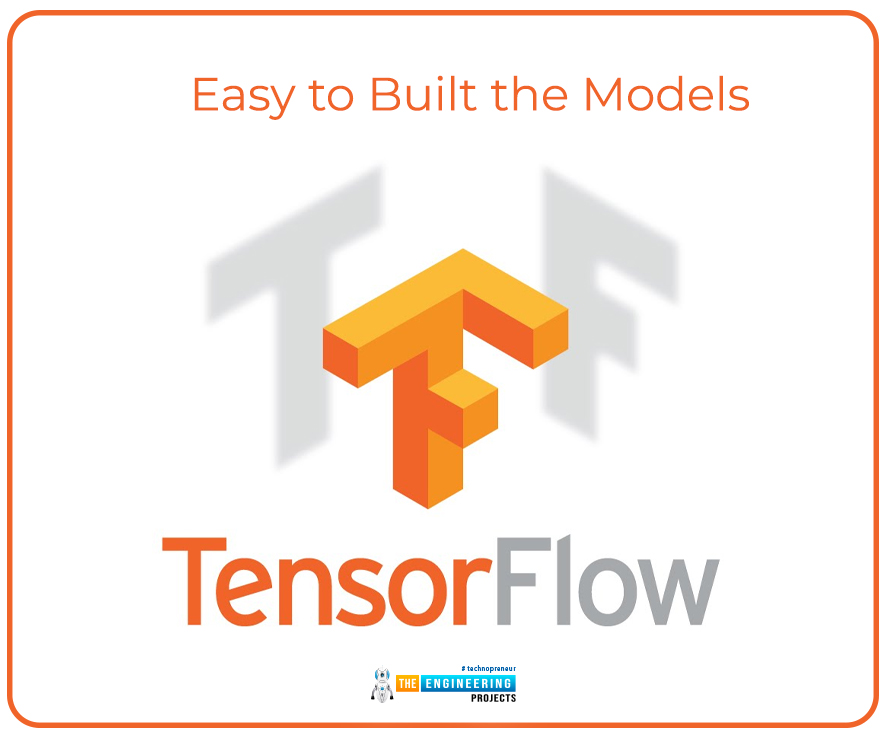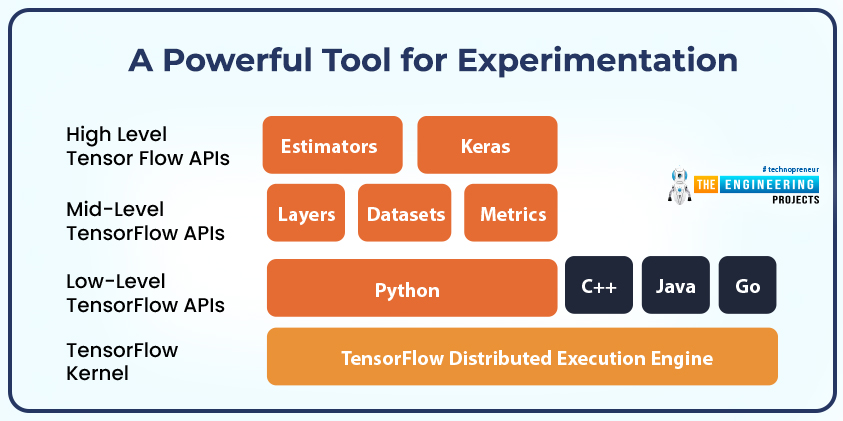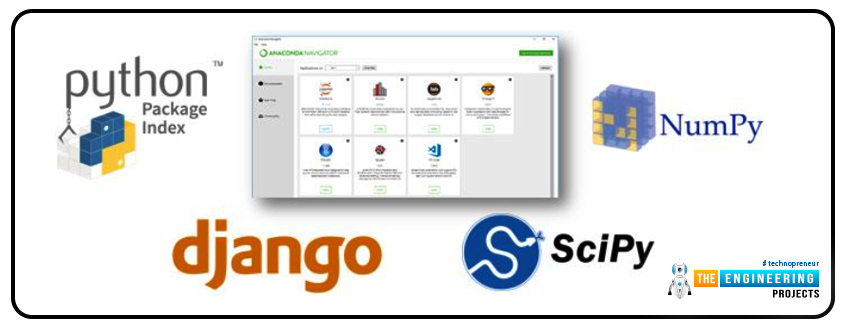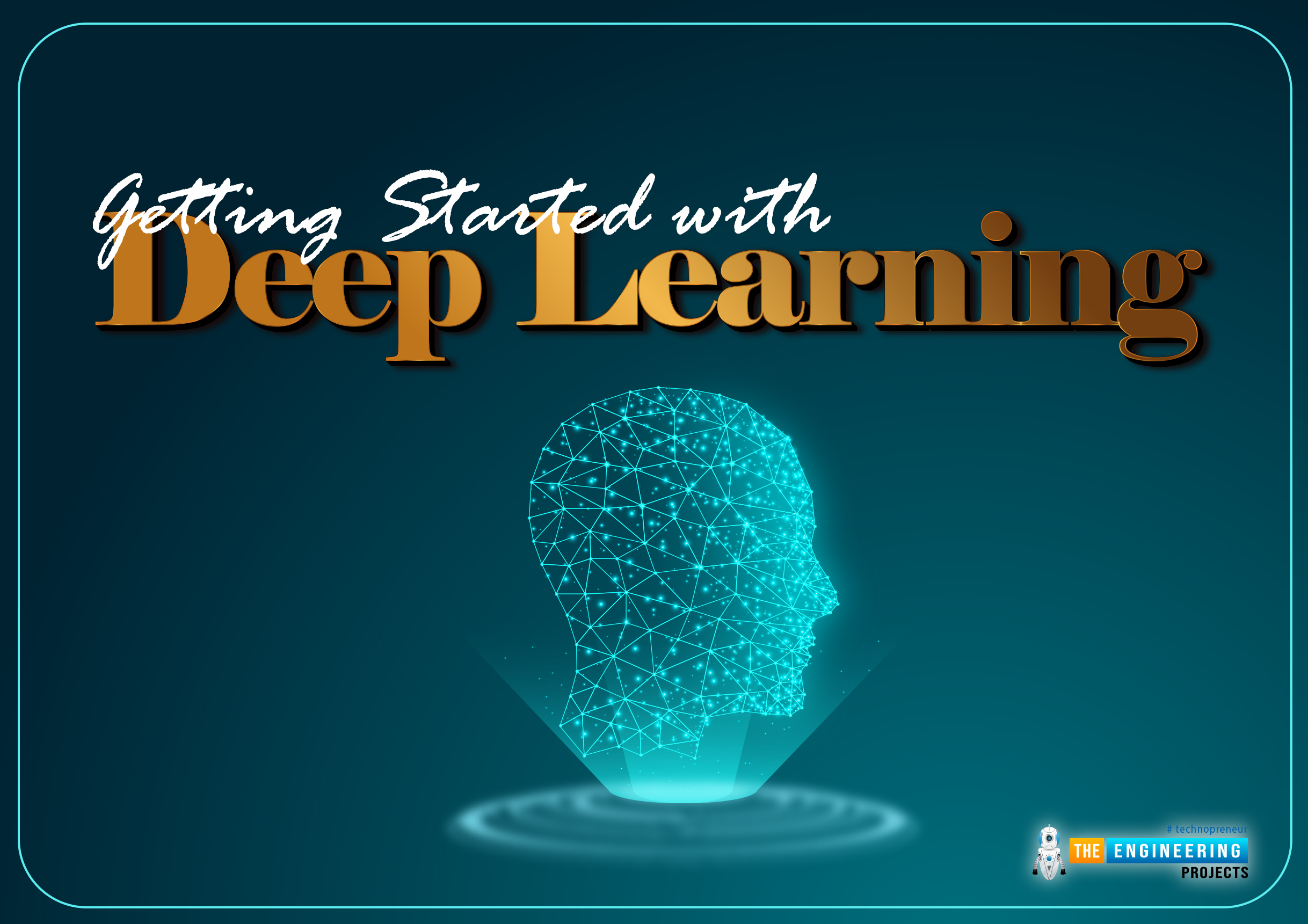
Hello students, welcome to the second tutorial on deep learning in the first one, we have learned the simplest but basic introduction of deep learning to have a solid base about what we are actually going to do with deep learning. In the present lecture, we will take this to the advanced level and will learn the introduction with the intention of learning more and more about the introduction and understanding what we want to learn and how will we implement the concepts easily. So, here is a quick glance at the concepts that will be cleared today:
What do we mean by Deep learning?
What is the structure of calculation in neural networks?
How can you examine the Neural Networks?
What are some platforms of deep learning?
Why did we choose TensorFlow?
How can you work with TensorFlow?

Deep Learning as the Sub-branch of AI
As we have said earlier, artificial intelligence is the field that works to take the tasks and work of the human being from the computer that is, the computer act like the human. Computers are expected to think. It is a revolutionary branch of science that deals with the feeding of the intelligence of a human being in the computer for the welfare of mankind and with the passage of time, it is proving itself successful in the real world. With the advancement and enhancement of the complexity of artificial intelligence, the field is divided into different branches therefore, AI has a branch named machine learning and then it is subdivided into deep learning. The main focus of this course is deep learning therefore, we describe it in detail.
Calculations in Neural Network
All this discussion was to tell you about the basics and the important introduction of deep learning and if it is still not clear to you then do not worry because by getting the information about it throughout the series you will start practising, things will be cleared here.
We have seen the discussion about the neural network before but it was just related to the concept of the weights in the neural network. In the present tutorial, you are going to see another concept about the neural network and the proper working on these networks will be started in the coming sessions.
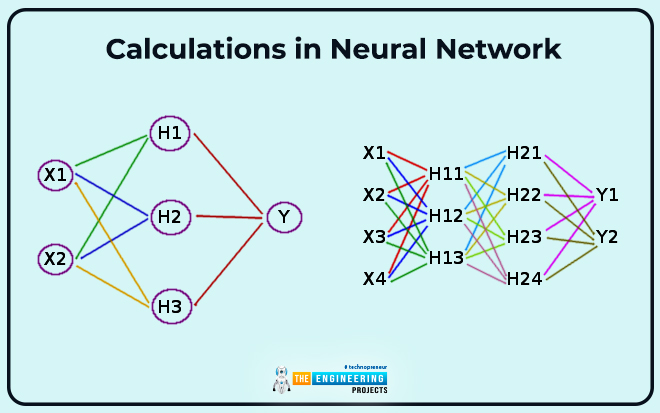
The neural network is just like the multiple layers of the human brain that contain the input layer where the data is fed in different ways according to the requirement of the network. Moreover, the multiple layers are responsible for the proper training process again and again in such a way that every second layer is more mature and accurate than the first one and in this way, the last one has the most accurate data among the others and this is then fed into the output layer where we can get the results. All these processes occur in a sequence while we are working on the neural network and it is listed below:
In the first step, the product is calculated by keeping the weight of each channel and the value of the input in mind.
The sum of all the products obtained is then calculated and this is called the weighted sum of the layers.
In the next step, the bias of added to the resultant calculation according to the estimation of the neural network.
In the final step, the sum is then subjected to the particular function that is named the activation function.
Working of Neural Network
As we have mentioned the steps, we know that it is not clear that much now in your mind therefore, we are discussing an example of this. By keeping all the steps in mind, we are now working on the practical application of working on a neural network.
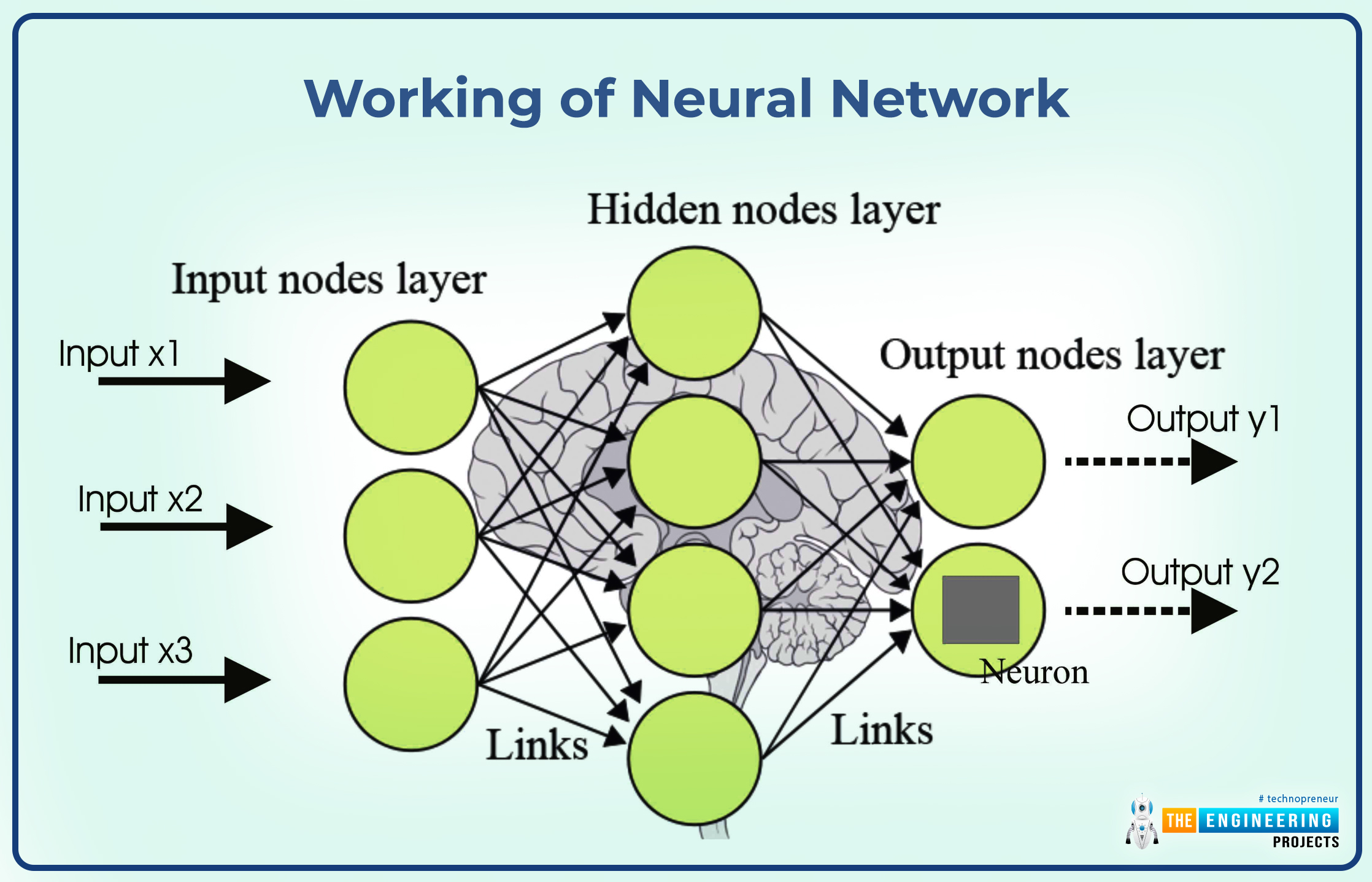
We are considering the example in which the 28*28 pixel of an image is observed for its shape. Each pixel is considered as the input for the neurons of the first layer.
The first step is then calculated by using the formula given below:
x1*w1 + x2*w2 + b1
We have taken the simple text example but added the process of each layer with the product of corresponding weight occurs till you reach the last layer. The next step here is calculated as:
Φ(x1* w1 + x2*w2 + b1)
Here the Φ sign indicates the presence of the activation function as mentioned above in the steps. Now, these steps are performed again and again according to the complexity of the task and training until all the inner layers are calculated well and the results are reached by the output layer and we get the results. An interesting thing here is the presence of a single neuron in the last layer that contain the result of the calculation to be shown as the output. The detail of how the neural network work will be discussed in the next tutorials. For now, just understand the outputs.
Platforms for Deep Learning
It seems that you are now ready to move forward. Till now, you were learning what is deep learning and why it is useful but now, you are going to learn how can you use deep learning for different tasks. If you are a programmer you must know that there are different platforms that provide the platform for the compilation ad working of the programming language and these are specific to the limited programming languages.
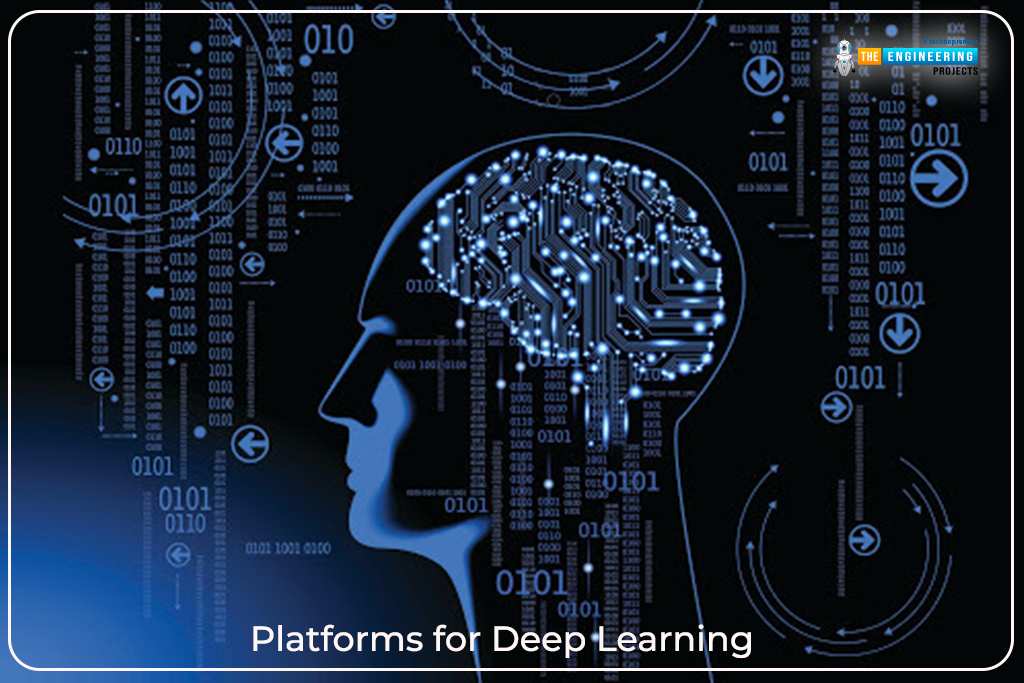
For deep learning, there are certain platforms that are used worldwide and the most important one will be disused here:
TensorFlow
TensorFlow is one of the most powerful platforms specially designed for machine learning and deep learning and it is a free source software library. Although it is a multi-purpose platform it has special features that are used to train machine learning and deep learning projects. You can have an idea of its popularity by the fact that it is presented by the google brain team and it contains the perfect functionality.
DL4J
The full form of DL4J is Deep Learning For You and as you can guess, it is specialized for deep learning and is written in java for the java virtual machine. Many people prefer this library because of its lightweight and specific design for deep learning.

Torch
If you are wondering if we are talking about a device then it is not true. Torch is an open-source library for deep learning and it provides the algorithm for the working of deep learning projects.
Keras
It is the API that is written in the TensorFlow deep learning platform. It is used for the best practice and experience for deep learning experts. The purpose of using this API is to have a clean, easy, and more reusable result of the code in less time. You will see this with the help of examples in the next sessions.
Why Choosing TensorFlow
As you can guess, we have chosen TensorFlow for our tutorial and lectures because of some important reasons that we’ll share with you. For these classes, I have tested a lot of software that was specially designed for deep learning as I have mentioned some of them. Yet, I found TensorFlow most suitable for our task and therefore, I want to tell you the core reasons behind this choice.
Easy to Built the Models
You will see that the training and other phases depend upon different models this is super easy to do with the help of TensorFlow. The main reason is, it provides multi-level models so that the one that suits you best will be present for you all the time according to the complexity and working of your project. As we have mentioned earlier, the Keras API is used with TensorFlow therefore, the high-level performance of both of them results in marvelous projects.
Easiest Production in Machine Learning Anywhere
In machine learning and related branches such as deep learning, production is made easiest with the help of the fantastic performance of TensorFlow. It always provides the perfect path towards production and results. It also allows us to have the independence of using different languages and platforms and therefore, it attracts a large audience towards itself.
A Powerful Tool for Experimentation
What is more important in research than perfect experimentation? Tensorflow is always here for the multiple types of experimentation and research options so that you may test your project in different ways and get the best results through a single software. The advantage of the presence of multiple APIs and the availability of handling several languages makes it best for experimentation.
Another advantage of choosing it for the tutorial is, it supports powerful add-on libraries and interesting models, therefore, it will become easy for us to experiment more and explain the results in a different way to approach all types of students.
These are some highlighted points that attracted us towards this software but overall, it has a lot in it and you will understand the points when you will see all of them in action in this series, We will be working totally on the TensorFlow and will discuss each and every step in detail without skipping any single step. The practical performance of each step will lead you to move forward with more interest and to understand each concept, we will use different examples. Yet, I have an idea that more explanation makes the discussion confusing so there will be a balance in the explanation.
Working With TensorFlow
As we have described before, TensorFlow is introduced by the google brain team and it was closely collaborating with the machine learning research organization.
TensorFlow is the software library that works in the collaboration with some other libraries for the best implementations of deep learning projects and you will see its work and projects in detail soon when we will move forward in this series. There are different libraries that are important to attach with the TensorFlow when we try to make it ready for the working of deep learning. Some of them are listed below:
Python package Index
Django
Scipy
Numpy
Following are the steps that are used to work on the TensorFlow. Yet, keep in mind, these steps vary according to the need of the time and type of the project.
Import the libraries in TensorFlow.
Assign paths of data sets. It is important to provide the path to column variables as well.
Create the test and train data and for this, use the Pandas library.
In the next step, the shape of the test and train data is printed.
For the training data sheet, the data type is printed for each column.
Set the label column values of the data.
You have to cunt the total number of unique values related to the datasheets.
Add features for the different types of variables.
Built the relationship for the features with a bucket.
Add features for the proper definition of the features.
Train and evaluate the model.
Predict the model and set the output to the test set.
Do not worry if these steps are new to you or if they are confusing for you at the moment, you will see the detail of them in the coming future. Moreover, Some of these steps may be different for different people because coding is a vast area and therefore, it has multiple ways to work in a different environments. So, today we learnt several concepts through this single lecture. We have revised and added some other information in the introduction of deep learning, We also have a discussion about neural networks and saw it working. Moreover, the platforms of deep learning were discussed here out of which, we chose the tensor flow and the reason for this choice was also explained well with the help of different points. In the end, we saw the brief procedure to train and predict the project and you will see all these concepts in action in the coming lectures so stay tuned with us.



